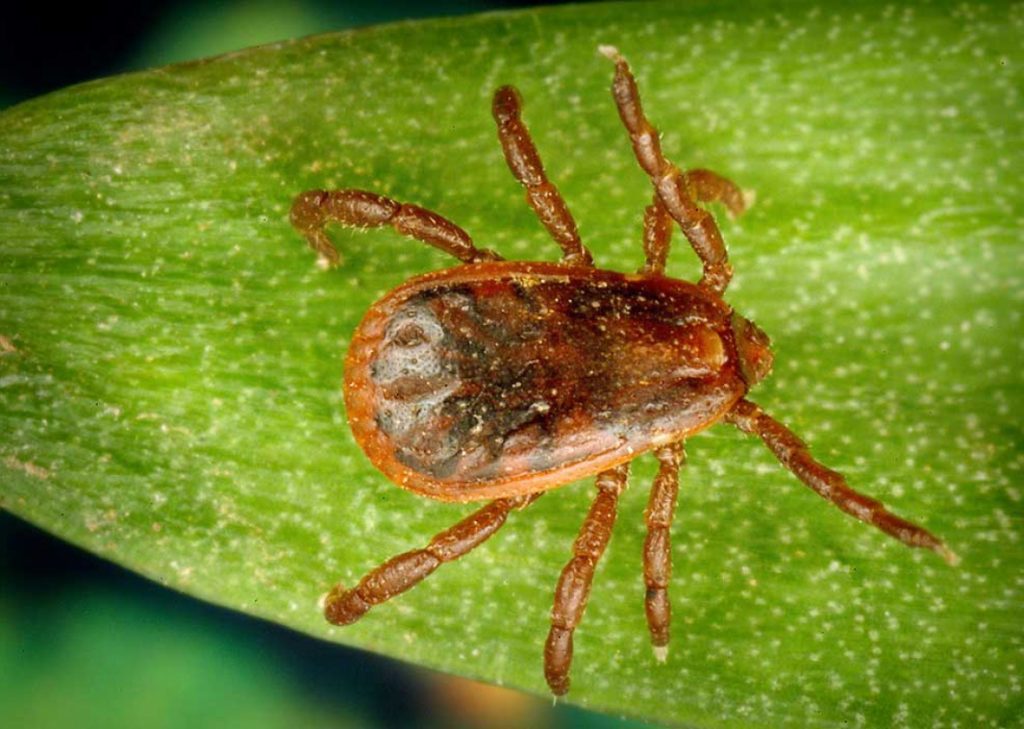University of AZ researchers launch the Great Arizona Tick Check

By Rosemary Brandt, University of Arizona
Think about ticks and what comes to mind? Perhaps red bull’s-eyes, Lyme disease and the eastern United States.
But Arizona is home to a lesser-known tick-borne disease – Rocky Mountain spotted fever. It’s the deadliest tick-borne disease in the world, and as cases are on the rise in much of the Southwest, researchers are issuing a unique call to the public: Send us your ticks.
The Great Arizona Tick Check will help researchers at the University of Arizona build the first-ever database of tick distribution and correlated disease in Arizona.
Fueled by a nearly $1 million grant from the Centers for Disease Control and Prevention, the effort is a collaboration between UArizona Cooperative Extension, the Mel and Enid Zuckerman College of Public Health and the Arizona Department of Health Services.
Creating a map of which ticks are where
“The central tick identification and pathogen testing program is an effort to create a much-needed map of what tick species are where in the state,” said Kathleen Walker, who will lead pathology and genetic testing of ticks received from the public through her role as an extension specialist in the College of Agriculture and Life Sciences’ Department of Entomology.
“The Arizona Department of Health Services will then be able to have information on their website and in their records to help inform public health efforts around the state.”
“This is what we call community-based participatory surveillance. Because going and sampling all across the state is impossible, this allows us to get ticks from a much broader area and engage people in science,” said Kacey Ernst, an epidemiologist in the Zuckerman College of Public Health and a partner on the project.
“People will be asked to send us ticks if they find them on themselves, pets or their surrounding environment. They will also get educational information about ticks and the diseases they carry.”
Tracking vector-borne diseases like Rocky Mountain spotted fever can be a challenge. There’s tremendous diversity in habitats in Arizona, and ticks – as well as the diseases they carry – are changing very rapidly in North America, Walker said. This is due to several factors, including environmental change, as well as the transportation of infested animals across state borders.
“We do know that the vector for Lyme disease and the pathogen was found in northwestern Arizona 30 years ago, but no one’s gone back since,” Walker said. “Has it moved? Has it spread? Is it gone? We don’t know. If there are new disease risks that weren’t there before, or if there are old disease risks that people forgot about – that’s kind of what we want to map out in the end.”
Deadly but treatable
Rocky Mountain spotted fever is a deadly but treatable bacterial disease spread through the bite of infected ticks. In Arizona, the primary vector is the brown dog tick. While dogs themselves cannot spread the disease, the ticks they carry can.
“We know that we have the brown dog tick, and we know that it carries Rocky Mountain spotted fever in Arizona,” Walker said. “But what we don’t know is the extent of this problem.”
Between 4,000 and 6,000 cases of spotted fever, including Rocky Mountain spotted fever, are reported in the United States each year, according to the CDC. Symptoms are often nonspecific, including fever, headache, nausea, muscle pain or rash.
“If you get antibiotics within five to seven days, you’re fine. But it has a much greater potential for fatality than Lyme disease,” Walker said. “If you find a tick that has bitten into you or a member of your family, don’t panic. Simply remove it, clean the site, put the tick on a piece of tape or in a small container, and send it to me.”
The Great Arizona Tick Check will help researchers gather important information on tick distribution and potential disease and is not meant to provide medical diagnosis.
“People who’ve contributed ticks to the program shouldn’t wait to hear back from our lab before seeking medical attention if they develop fever or rash after a tick bite,” Walker said.
Knowledge is power
Once the program is fully up and running, the research team hopes to inform particular counties and rural areas around the state if Rocky Mountain spotted fever is present or potentially prevalent in a community.
“The more people that participate, the more likely we will be able to provide good data and information back to the public,” Ernst said. “Our hope is to understand the distribution of the tick species and what pathogens they may harbor.”
Information on how to safely remove a tick and how to send it to the researcher team can be found on the Arizona Tick Check website.
SOURCE OF PRESS RELEASE: University of Arizona




















We invite you to comment on our Facebook page.
Visit LymeDisease.org Facebook Page